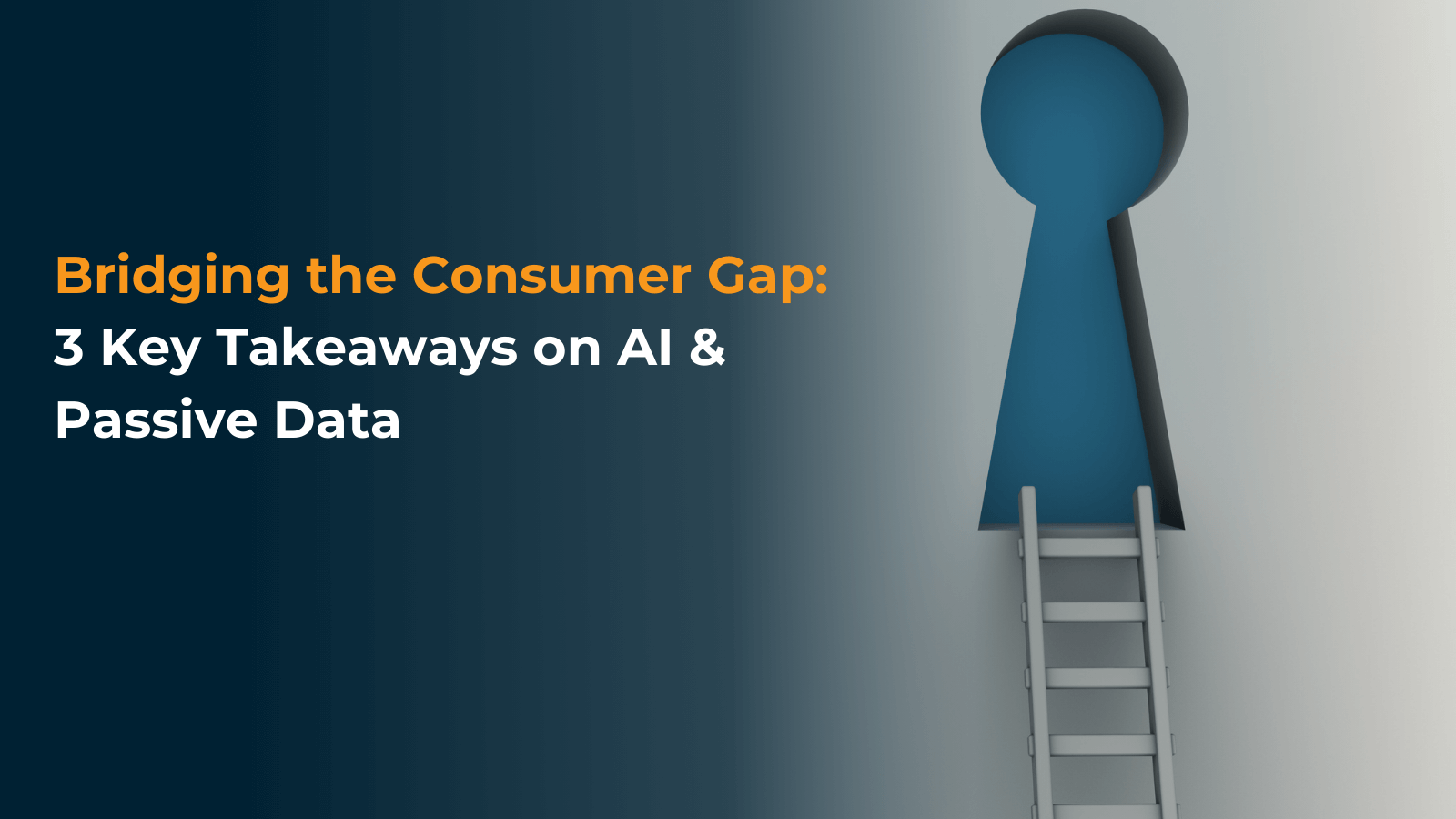Consumer Insights: Unveiling the Key Drivers of Customer Behavior for Business Success

Why do consumers do what they do? What compels them to buy some products repeatedly and shun others? What marketing messages resonate?
Many businesses resort to guesswork to answer these questions. They make some changes, test out a few different approaches, and then—if something worked—try to figure out what moved the needle.
There’s a better way to identify the key drivers of customer behavior: consumer insights.
What Are Consumer Insights?
Consumer insights are actionable conclusions—based on facts gathered from consumer insights research—about consumer behaviors and motivations. They’re not about guesswork or speculation; meaningful retail consumer insights start with sound, well-designed market research. They should also suggest specific actions that companies can take to drive more sales, attract more customers, or otherwise boost their business.
To illustrate the value of consumer behavior insights, imagine you own a local grocery and deli. You primarily stock locally prepared foods that have a limited shelf life, so correctly anticipating in-demand products helps to minimize your food waste and maximize your profits.
You now from years past that your sales of various soups increase dramatically every fall. Soup season is great for business: the profit margin is outstanding and it’s easy to stock your freezer with best sellers to maintain a more flexible inventory. You’re hoping to identify a few consumer insights that would help you sell more soup year-round.
Your first—but not necessarily correct—assumption is that customers buy more soup in the fall because that’s when it starts to get colder outside, which makes hot soup more appealing. But that’s not a useful consumer insight for two reasons: it’s based on nothing stronger than a correlation, and it doesn’t suggest anything actionable. You can’t very well improve your soup sales by changing the temperature outdoors.
What you need, then, is data that can help you understand the link between autumn and higher soup sales. Maybe it’s not about the temperature, but instead that:
- shoppers start to worry about their holiday shopping and travel budgets in the fall, and soup makes for an affordable yet satisfying meal;
- consumers and their families are more likely to develop seasonal illnesses like the flu in the fall, leading them to crave simple, soothing foods like soup; or
- customers want an easy, fast, comforting meal—like heat-and-serve soup—on nights when the sun goes down long before they’re home from work.
Determining which of these conclusions best explains your particular situation can help you chart a course that will meet your consumers’ true needs. Perhaps you can tap into that sense of comfort and simplicity in other seasons by consciously pairing seasonal soups with hearty sides that create a satisfying yet quick and affordable meal. Or, if soup consumption is more tightly associated with sick days, you might market antioxidant-rich soups as a way to maintain better health instead of merely using it to restore health after an illness.
What are the methods and approaches for gathering Consumer Insights?
Consumer insights are gathered using various research methodologies to understand customer behavior comprehensively. Businesses employ the following approaches:

Quantitative Research: Surveys and Statistical Analysis
Quantitative research explores a numerical aspect of research. The survey is one of the most commonly used methods in understanding customer preferences at scale. By analyzing trends and patterns, businesses can gain insights into consumer behavior on a broad level.
Qualitative Research: In-Depth Interviews and Focus Groups
Qualitative research explores the subjective aspects of consumer behavior. In-depth interviews and focus groups allow businesses to examine the motivations, perceptions, and emotions that drive consumer choices. These insights into shopper behavior provide a nuanced understanding beyond numerical data.
Mixed Methods: Blending Quantitative and Qualitative Approaches
The most comprehensive consumer insights often come from a combination of quantitative and qualitative methods. By blending statistical analysis with in-depth interviews, businesses can validate findings, ensuring a more robust understanding of Shopper behavior.
How Can Businesses Use Consumer Behavior Insights?
Businesses can leverage consumer behavior insights in various ways to enhance their strategies, improve customer experiences, and drive growth. Consumer insights enable you to operate your business from a foundation of knowledge and data rather than assumptions and speculation. They give you a competitive advantage by helping you to avoid missteps.
Research-based consumer insights are useful for far more than just product design; they can inform innovations, marketing, finance, operations, and more. By effectively utilizing consumer insights research, businesses can make informed decisions, enhance customer satisfaction, and drive long-term success. Retail customer insights and brand consumer insights are invaluable for developing strategies that are aligned with consumer needs and market dynamics, ultimately leading to sustained growth and competitiveness.
Retail consumer insights can answer questions like:
- How can we expand our market to new customer segments or geographic areas?
- How can we improve customer loyalty?
- What marketing campaigns or promotions would be most effective?
- How can we better forecast demand to improve inventory control?
- Where are there gaps in our existing market coverage and how can we fill those gaps?
So, how can you get the kind of data that produces useful consumer insights?
Using a Real-Time Consumer Insights Platform to Navigate Dynamic Markets
Actionable consumer insights depend on a combination of quantitative and qualitative data.
First, they require an accurate assessment of what consumers do based on quantitative studies of consumer behavior. Sales data and trends are helpful, but in-home usage tests (IHUTs) are even better. How often do people reach for a specific product? How much of it do they use, and exactly when do they use it?
From there, qualitative data clarifies why consumers behave the way that they do. Good qualitative studies allow participants to describe their perceptions, thoughts, and motivations in their own words. Platforms that use video feedback also give researchers access to consumers as they interact with products naturally, rather than relying on memory or artificial constructs in a focus group or interview setting.
A consumer insights platform that provides access to both types of data—with real-time data collection and rapid data analysis powered by artificial intelligence (AI)—is the key to agile decision-making in today’s dynamic markets.
Actionable Consumer Insights: Turning Data into Business Strategies

Consumer insights, to be truly valuable, must be actionable. Businesses can leverage these insights to inform strategic decisions and enhance customer experiences. Here’s how:
Transforming Insights into Actionable Recommendations
Turning raw data into actionable recommendations is a crucial step. Businesses must identify critical findings and translate them into practical strategies. For instance, if quantitative data reveals a spike in online shopping during specific hours, the business can adjust marketing efforts to target that timeframe.
Incorporating Key Consumer Insights into Business Planning
Brands should integrate consumer insights into overall business planning. Whether it’s product development, marketing campaigns, or customer service initiatives, aligning strategies with consumer behavior ensures a more customer-centric approach.
Measuring the Impact of Consumer-Centric and Empathetic Initiatives
After implementing strategies based on consumer insights gained through research, businesses need to measure their impact. Key performance indicators (KPIs) can gauge the success of initiatives, providing valuable feedback for continuous improvement and establishing your business as not only consumer-centric but also deeply empathetic to the needs and preferences of your customers.
High-Quality Market Research Enables Actionable Consumer Insights
QualSights specializes in helping companies discover powerful, authentic consumer insights through tech-enabled market research. Our connected Smart Sensors automatically provide accurate and precise quantitative data by measuring product usage around the clock so you don’t miss anything. Meanwhile, our user-friendly Consumer App fills in the backstory, providing real-time consumer insights thanks to in-the-moment video feedback and experience-based questions.
Ready to learn more? Contact us to set up a demonstration.
 Research Industry Insights
Research Industry Insights 

